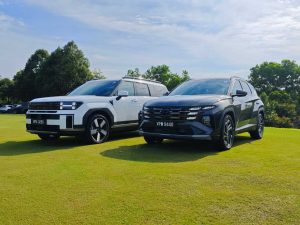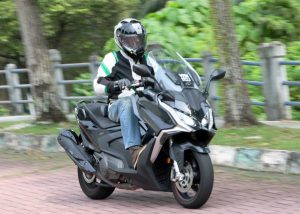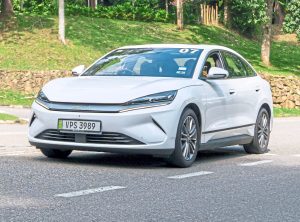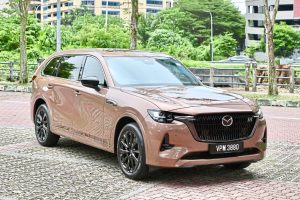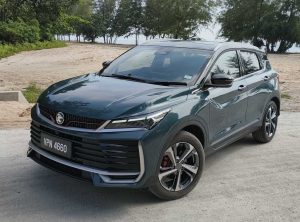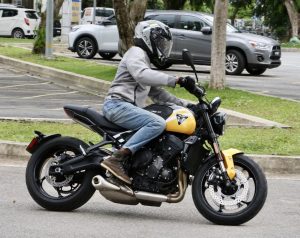FRANKFURT: It was the wrong car at the wrong time. When Mercedes-Benz pulled the wraps off the new W140 generation S-Class in the spring of 1991, the era of glitz and glamour in postwar Germany was coming to an end.
It was dawning on Germans that their newly achieved unity was going to cost a lot of money. On top of that were increasing concerns about climate deterioration and the second Gulf War sparked renewed fears about the finite nature of oil, A swanky “tank” for celebrities and politicians did not fit into the picture.
The Stuttgart maker quickly cornered 50 per cent of the luxury limo market but critics and some even die-in-the-wool Mercedes-Benz fans baulked at paying 88,000 and 200,000 Deutschmarks – or about €242,000 (RM1.18mil) today – for a huge 5.2-metre-long sedan which looked gross alongside its elegant rival, the BMW 7 Series.

Indignation tuned to ridicule when it turned out that the 1.89-metre S-Class was too wide to fit on the wagons of the car train to the fashionable northern German island of Sylt where stressed-out executives like to go on vacation.
The technical excellence of the car was beyond reproach – after all it was the product of nearly 10 years in development and huge financial investment. Chief engineer at the time, Wolfgang Peter, said it was "the largest passenger car project ever undertaken by Mercedes-Benz" while the motoring gazette Auto, Motor und Sport dubbed it simply the "best car in the world".
Naturally, such luxury polarised the media. The left-leaning Tageszeitung “taz" newspaper castigated the S-Class as "the product of engineering mania and the climate-killer instinct."

The comparisons with chancellor Kohl are inevitable since he was chauffeured around in a range-topping version. Just like the politician though, the W140 S-Class was seen as sedate, a little out of step with the times and reviled as "the fat one".
Yet like the chancellor of unity, who held office for four legislative periods and led the country for 16 years, the W140 had staying power too. It was built until 1998, but many of the 400,000 or so examples have survived in good condition. Production moved to India until 2001 although experts say not all the local components used were up to scratch.
Even critics tend to pipe down once they take the wheel. By the way, to help drivers cope with the dimensions Mercedes-Benz fitted folding exterior mirrors and the small little chrome rods which popped up from the corners of the boot within two seconds of engaging reverse gear. Compared to bulky, modern SUVs the W140 looks almost dainty.
As soon as the heavy doors close automatically with a distinctive clunk, driver and passengers are in a world of their own. The cabin is silent and a small army of electric helpers make life easier for the occupants. Central locking and electric windows were standard for the first team – even contemporary versions of the E-Class executive saloon often came with old-fashioned wind-up windows.

Privacy was ensured by curtains and a powered roller blind in the rear while adjustable and heated individual seats in the second row maximise comfort. A total of 60 electric motors were installed in the big Mercedes.
The car has a decent range of engines from S280 which offered 190 horsepower through to the 228-hp S300, 286-hp S420 and 308-hp S500. Top of the range was an awesome V12 which turned out 408 horses in the S600 (the power was later reduced to 389 bhp in October 1992). For cheapskates there was a turbo-diesel with a measly 150 horses on tap and later a cheaper petrol model with a 2-8-litre six-pot turning out 193 hp.
Reviewers continued to heap praise, enthusing that drivers were oblivious to the massive weight of the car when underway. “This luxury liner is still a pleasure to drive and it feels up to date,” a tester for Auto Motor and Sport magazine wrote.

Thirty years after its premiere, the W140 generation S-Class is formally on the cusp of becoming a classic although examples can still be picked up for small sums of money. The luxury barge is nowhere near as sexy as a coupe or cabriolet and the armada of electric aides on board frightens off novice enthusiasts. Engine management issues can be complex and expensive to fix.
In Germany, the licensing authorities in Flensburg list fewer than 5,000 examples of the W140 as being registered for use. Many are languishing on the docksides of Baltic Sea ports after being sold to customers who cannot afford to keep them maintained properly.

As a used car, the W140 is a bargain. A good example with either a six-cylinder or eight-cylinder engine can be had for well under €15,000 (RM74,000). Fans will however, need deep pockets if repairs arise.
Those tempted to buy one might like to bear in mind that these luxury cars are just a little too big for European roads. With a W140 S-Class finding somewhere to park in gridlocked cities is never going to be easy.



